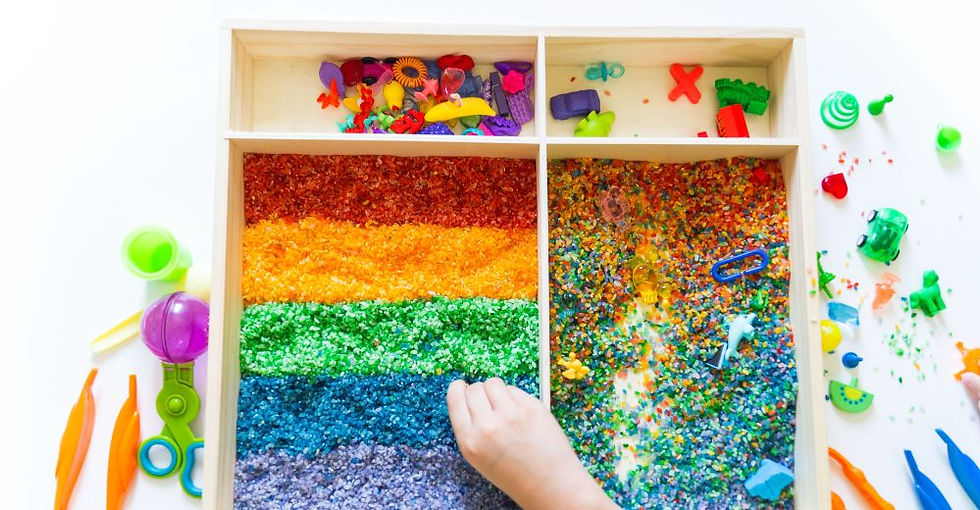Understanding the Expressive Therapies Continuum Part 2: Sensory Level Processing
- Lauren Fallat, LPC LPAT ATR-BC

- Nov 24, 2022
- 3 min read
by Lauren Fallat, LPC LPAT ATR-BC
Sensory level processing is the way in which we take in and respond to information from our environment. On the Expressive Therapies Continuum, there are various levels of information processing and mental image formation. On the base level of the ETC, we find the Kinesthetic and Sensory components. For this blog post we will explore the Sensory component of the ETC.
When we engage our senses and intentionally activate our sense of touch, smell, sight, sound, and taste, we focus on processing information from our environment in a physical way and through our bodies. A person’s ability to process sensory information is the starting point for understanding their ability to perceive and respond to sensory information, as well as their ability to regulate sensory input. Often when stimulating different sensations, we also connect to our inner emotions.
According to Lisa Hinz in her book Expressive Therapies Continuum: A Framework for Using Art in Therapy, the Sensory component focuses attention on the way in which an individual processes internal and external sensations based on various art materials and techniques. Hinz also emphasized that sensory stimulation aids individuals in achieving an increased state of internal calm and of focused attention, often desirable in individuals diagnosed with sensory processing disorders. Hinz also highlighted in the research that the Sensory component is an affective level to work on with individuals with dementia and Alzheimer’s as sensory stimulation “...can help them regain lost memories and other vital cognitive functions.” Additionally, when it comes to understanding and working with individuals who have experienced trauma, it is essential to have a clear understanding of sensory processing. Trauma can affect an individual's sensory experience in a number of ways, making it difficult for them to regulate their emotions and behavior.
Tactile stimulation is often achieved using materials with texture, such as clay or objects that can be felt or held in one’s hand. To achieve heightened awareness, some individuals may close their eyes when exploring an object in their hands or creating a sensorimotor processing image with art mediums held in their hands. There is no one specific art medium that necessarily belongs in the Sensory component of the ETC, but the way in which the material is used can often alter how the senses are engaged. For instance, finger paints on smooth paper provide an optimal tactile experience for the individual and the focus of the activity is to use one’s hands to paint and smooth and push around the paint rather than a mediator, such as a paint brush.
In order to engage the olfactory sense, consider incorporating smells from different art media. These materials might include scented markers, herbs and spices being used in a non-traditional artwork, or fabric softener sheets. It may be important to extend the activity further by naming the smells and describing the sensations verbally as a way to promote sensory integration and processing, according to Hinz.
Here are some examples of Sensory Experiences in Artmaking outlined by Hinz:
Forming wet clay
Mixing paint with fingers
Finger painting with shaving cream that is scented
Painting or Drawing to music
Object exploration with eyes closed
In our next blog, we will explore the Kinesthetic component of the Expressive Therapies Continuum.
To Schedule an appointment, click on the Book an Appointment button.
To learn more about Holistic Health Counseling Center, please visit out website at www.hhccnj.com To read our latest blog, see this page: https://holistichealthcounselingcenter.com/blog/
Reference List:
Hinz, L. D. (2020). Expressive Therapies Continuum: A framework for using art in therapy (2nd ed.). Routledge. https://doi.org/10.4324/9780429299339




Comments